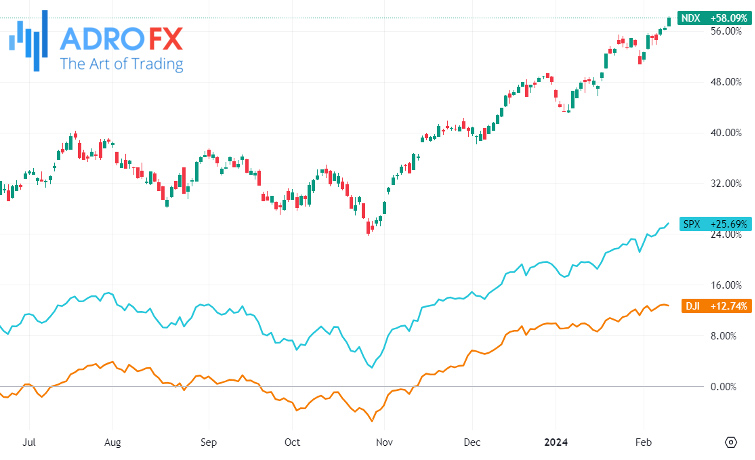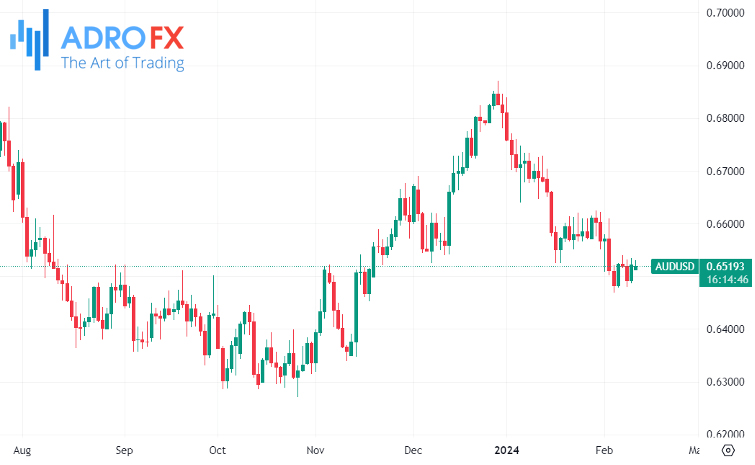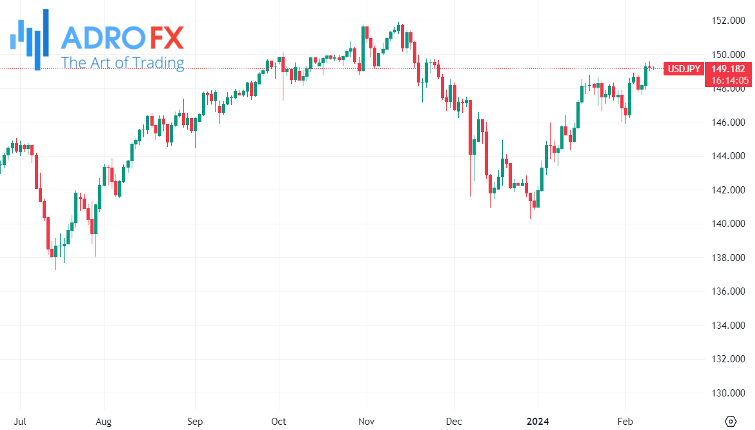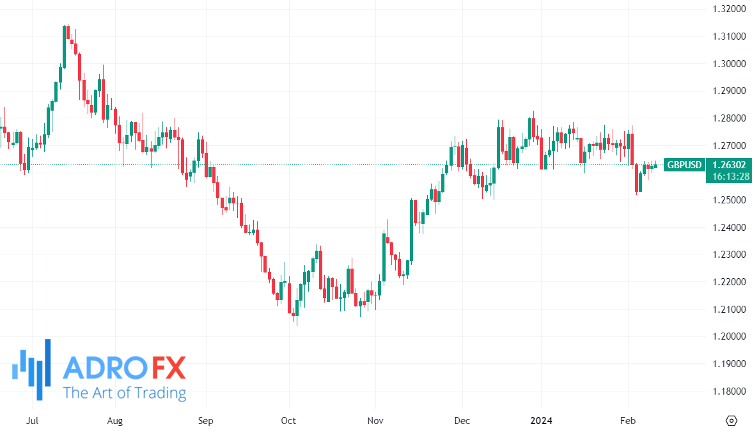S&P 500 Hits Historic Mark, Nasdaq Touches 16,000 as Megacaps and Chip Stocks Drive Market Surge | Daily Market Analysis

Key events:
- Eurozone - ECB's Lane Speaks
- USA - FOMC Member Bowman Speaks
- UK - BoE Gov Bailey Speaks
- USA - FOMC Member Kashkari Speaks
On Friday, the S&P 500 achieved a historic milestone by closing above 5,000 for the first time, while the Nasdaq briefly touched 16,000. Megacaps and chip stocks, notably Nvidia (NASDAQ: NVDA), propelled the indices as investors expressed confidence in artificial intelligence technology and anticipated robust earnings data. The Dow Jones Industrial Average experienced a slight dip of 0.14%, closing at 38,671.69, while the S&P 500 gained 0.57% to reach 5,026.61, and the Nasdaq Composite surged by 1.25% to close at 15,990.66. Nvidia, boosted by reports of establishing a new business unit for designing custom chips, finished 3.6% higher, reaching a record high.

Meanwhile, the Australian Dollar seeks to extend recent gains during a subdued Asian session on Monday. Despite stable US Treasury yields, the weakening US Dollar exerts downward pressure on the AUD/USD pair. The rise in Chinese New Loans could offer support for the Australian Dollar, although concerns about deflation in China may act as a potential headwind.

The Australian money market's decline, despite the record surge in US markets on Friday, constrains the Australian Dollar. Traders exercise caution ahead of crucial US inflation data, impacting interest rate expectations.
In the Asian session on Monday, the Japanese Yen remains near its lowest level since November 24 against the US Dollar. Bank of Japan Deputy Governor Shinichi Uchida's remarks last week, indicating reluctance toward aggressive tightening even after exiting negative interest rate policy, contribute to the bearish outlook for the safe-haven JPY. Market consensus anticipates the BoJ's departure from ultra-loose monetary policy settings after March's annual wage negotiations outcome. Additionally, uncertainty surrounding the Federal Reserve's rate-cut trajectory keeps USD bulls on the defensive, capping gains in the USD/JPY pair.

During Monday's Asian session, the GBP/USD pair experienced some buying interest but lacked significant follow-through, staying below the mid-1.2600s, marking the upper boundary of a multi-day trading range.
The US Dollar continued to grapple with challenges in gaining substantial traction, primarily due to uncertainties surrounding the Federal Reserve's trajectory for rate cuts. Additionally, the prevalent bullish sentiment in global equity markets acted as a counterforce, diminishing the appeal of the safe-haven Greenback and providing mild support to the GBP/USD pair.

Market sentiment has shifted regarding expectations for early and aggressive rate cuts by the Fed in 2024. The resilience of the US economy and hawkish remarks from Federal Open Market Committee officials, such as Dallas Fed Bank President Lorie Logan's statement that there is no urgency to cut rates, have contributed to a more cautious approach. Investors are now seeking further evidence on inflation to confirm the sustainability of progress.
Meanwhile, the growing acknowledgment that the Bank of England might implement interest rate cuts in the coming months is restraining traders from adopting overly bullish positions on the British Pound. Current market pricing implies the possibility of four 25 basis points interest rate cuts by the end of the year.
Given this landscape, a prudent approach involves waiting for robust follow-through buying before considering further near-term appreciation in the GBP/USD pair. Traders may also opt to stay on the sidelines ahead of significant macroeconomic releases scheduled for the week, including the latest consumer inflation figures from the US on Tuesday and the UK on Wednesday.
Commencing the new week on Monday, gold prices appear poised to extend the previous week's downtrend, testing the $2,020 level. This comes despite the US Dollar and US Treasury bond yields being on the back foot, and with most major Asian markets closed for the Lunar New Year holiday, leading to holiday-thinned trading conditions.

Looking ahead, gold prices are expected to sustain their bearish momentum amid cautious trading ahead of the US Consumer Price Index (CPI) data and a reduction in geopolitical tensions involving Israel. The Israeli military announced the conclusion of a series of strikes in southern Gaza on Monday, following the rejection of a Hamas ceasefire proposal by Israeli Prime Minister Benjamin Netanyahu.
Following recent positive jobs and growth data, which led to a delay in market expectations for Federal Reserve interest rate cuts, the focus turns to Tuesday's inflation report for January. Any indication of a rebound in price pressures could further push back expectations for rate cuts. Economists anticipate a 0.2% rise in consumer prices from the previous month, translating to an annual increase of 2.9%, with underlying inflation expected to increase by 3.8% from a year earlier.
Throughout the week, market participants will closely follow statements from several Fed officials, including Richmond Fed President Thomas Barkin, Atlanta Fed President Raphael Bostic, and San Francisco Fed head Mary Daly. Additionally, the economic calendar includes retail sales figures for January and the weekly report on initial jobless claims on Thursday, while Friday will feature reports on producer price inflation and preliminary data on consumer sentiment.








